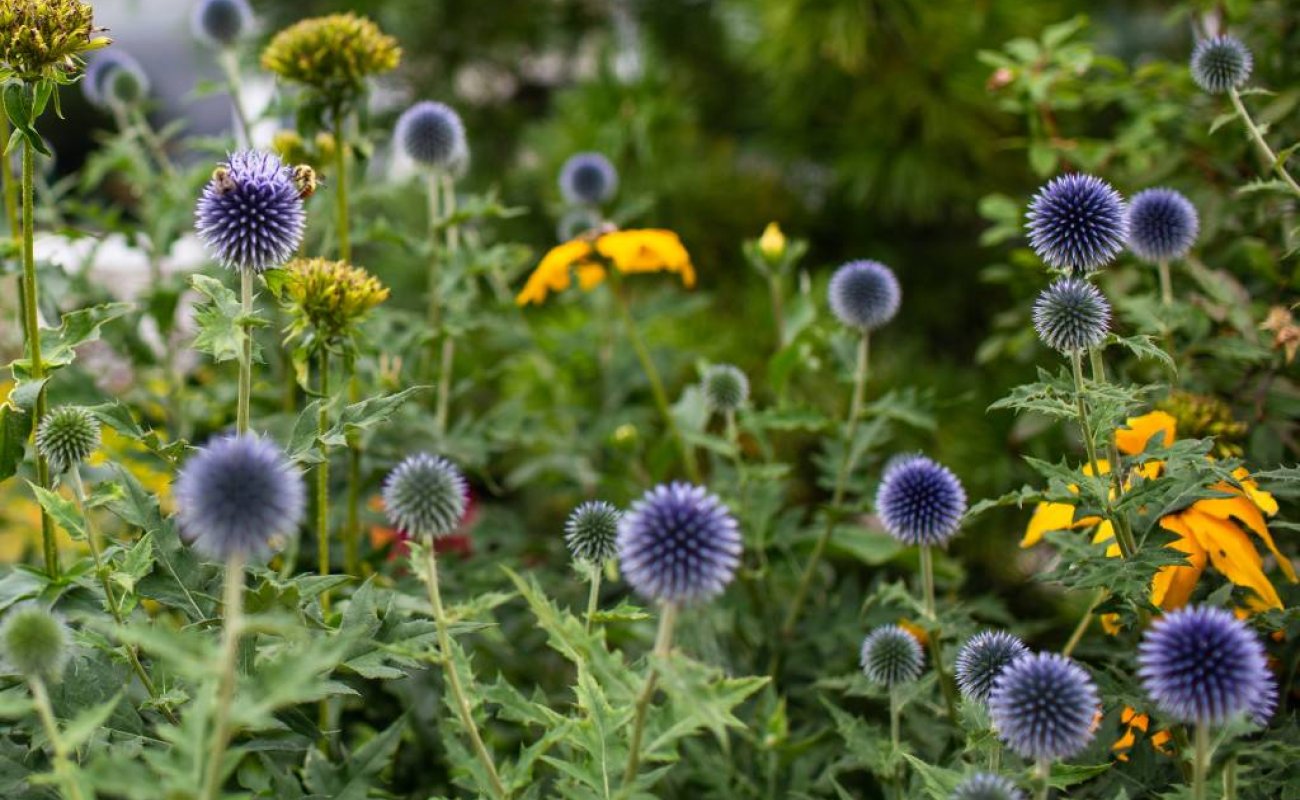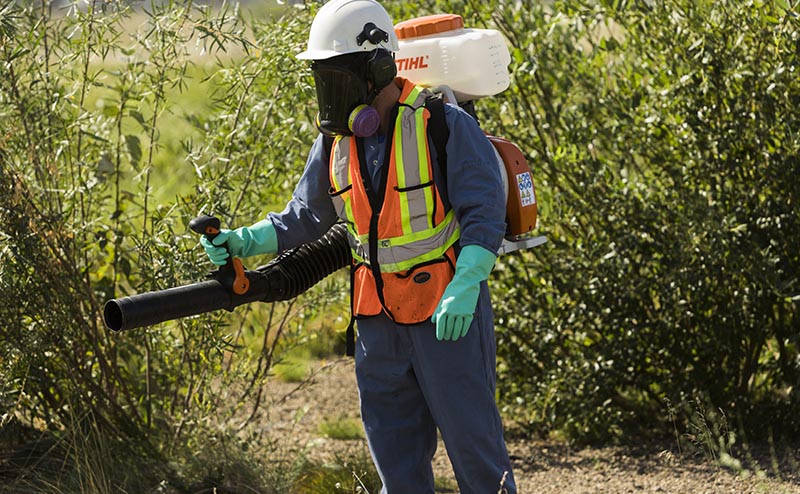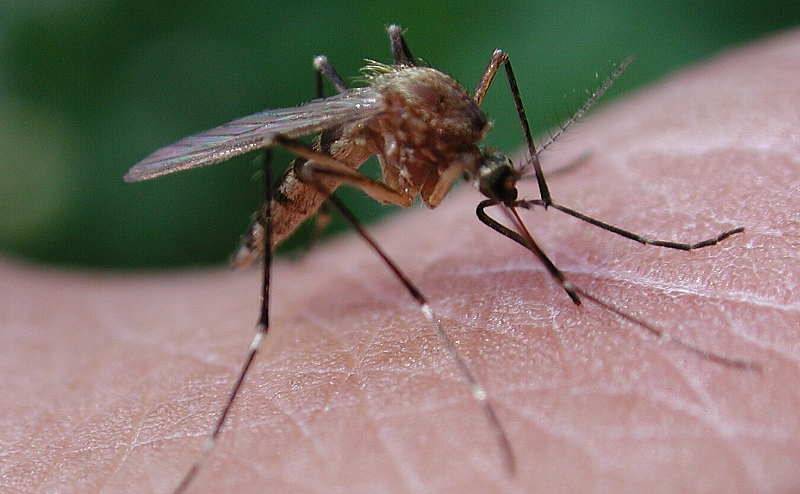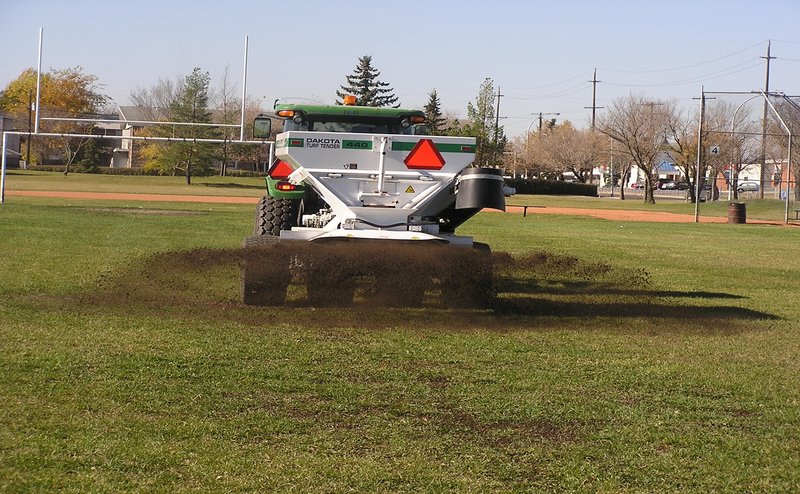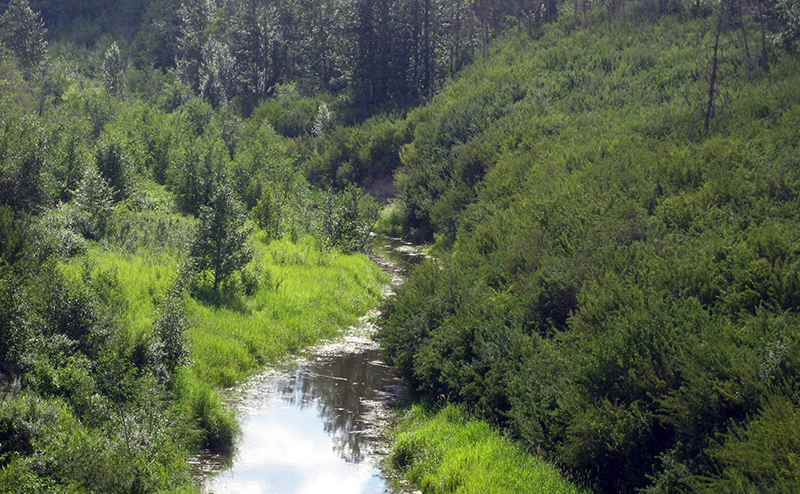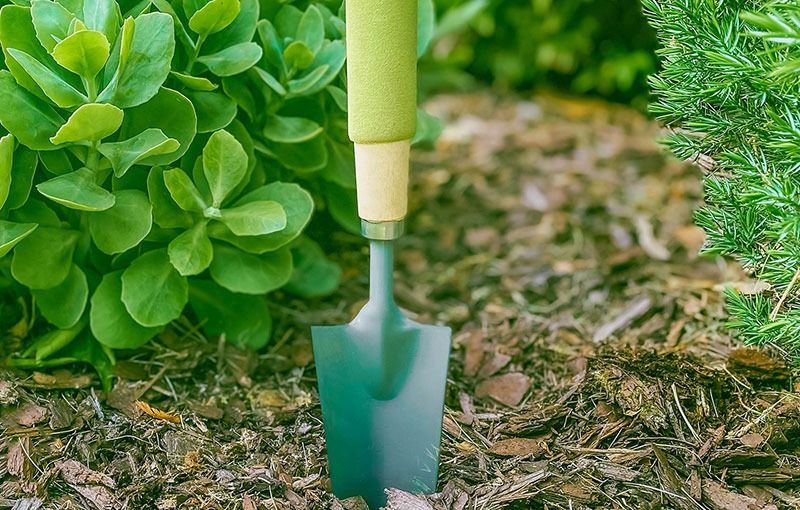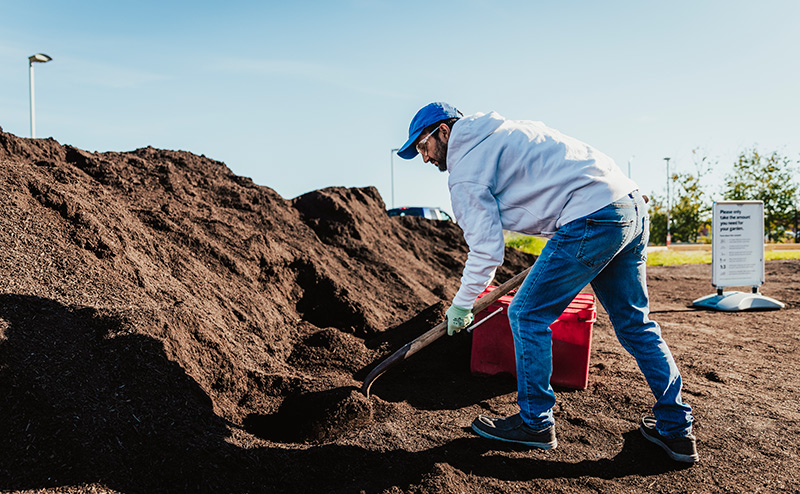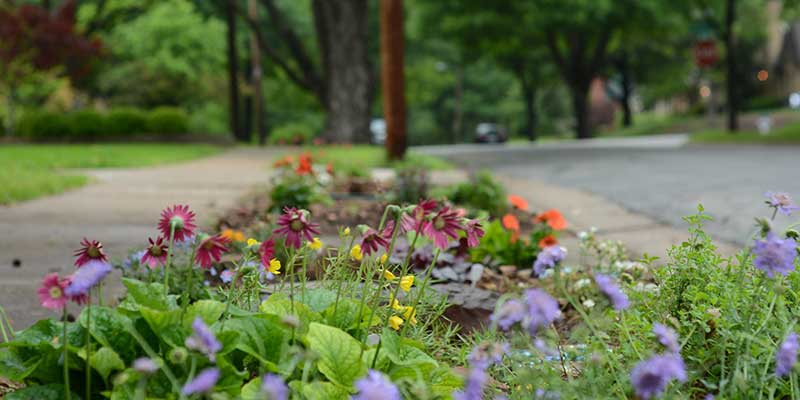
Help create colourful and diverse streetscapes, foster community pride and support ecological resilience—right in front of your home.
The Residential Boulevard Gardening Program offers Edmontonians the opportunity to garden on City-owned boulevards (the strip of land between the sidewalk and the road) in front of their property.
Gardening on boulevards is permitted through an annual declaration process. To participate, residents must declare their gardening activities on their boulevards during the declaration period each season.
Boulevard Gardeners who have participated in prior years must submit their declaration each year to continue boulevard gardening.
Cost: This is a free program.
A boulevard is the City-owned grassy strip located between the sidewalk and the road, directly in front of a residential home, multi-unit building or business. This area is typically maintained by the resident or owner of the property.
With a boulevard garden, you can enhance your boulevard’s appearance and manage weeds effectively. You can add splashes of colour using flower plugs, ground cover, or small planters and apply mulch for aesthetics and weed suppression. See the guidelines below.
The boulevard must be:
- located at the front of the property (frontage)
- be City-owned land located between a roadway and sidewalk
- be maintained by the resident, property owner or a residential complex
Boulevards near multi-unit buildings and condos are great candidates for boulevard gardening as long as the garden is coordinated with the condo board, building owner and other tenants.
Boulevards do not qualify if the boulevard is:
- mowed by the City
- in an area without a sidewalk
- currently under construction
- under contract or warranty by a developer or a contractor
Gardening is not permitted on side boulevards (flankage), alleyways, back lanes, centre medians, or other public spaces.
To be eligible to participate in the Residential Boulevard Gardening Program, the applicant must:
- be the occupant or owner of the private property
- be over 18 years of age
Anyone under 18 years old wanting to create and maintain a boulevard garden must do so under supervision of an adult who has submitted the declaration for the garden.
Submit Your Declaration
Boulevard Gardening Guidelines at a Glance
The information below summarizes the key rules, regulations and responsibilities to safely, responsibly and successfully garden your boulevard.
In addition to submitting your declaration, please remember these key steps before boulevard gardening:
- Check the Site: Do a visual inspection of the boulevard. Avoid planting over visible tree roots, utility boxes, or near fixed objects.
- Plan Ahead: Consider your garden layout and ensure your plants, planters, and mulch all follow guidelines.
- Notify Your Neighbours: Let nearby property owners know about your garden plans.
What you can plant:
- Non-invasive herbaceous annuals or perennials
- Flower plugs, bulbs, and grasses with rootballs no bigger than 10.2 cm (4 inches)
- Ground covers and lawn alternatives under 30 cm (12 inches) tall (for example: clover, creeping thyme, stonecrop)
- Seeds directly sown (mature plant height must be 30 cm/12 inches or less)
- Tip: Opt for native species suitable for Alberta, if possible
- Clean garden mix soil or organic/cedar wood mulch (no dyed varieties)
Do not plant:
- Trees, or woody shrubs
- Prohibited invasive species – visit the Weeds page to learn more
- Root vegetables (such as carrots, beets, radishes) as they can be disruptive to root systems of boulevard trees
The planting of any edible or food-producing plants on boulevards is discouraged. These gardens may attract passersby to stop and pick from them, and they are often exposed to road contaminants like salt. Gardeners should be aware of the potential risks associated with growing food in these areas.
The consumption of any edible plants grown on a boulevard is done at the gardener’s own risk. The City of Edmonton is not responsible for any health, safety, or other risks that may result from consuming such plants.
All digging must be low-impact to protect underground utilities and tree roots.
- Only low-impact digging is allowed (max depth: 5.1 cm or 2 inches)
- You may add clean garden mix soil or organic mulch (max: 5.1 cm above grade)
- Combined soil/mulch and digging depth must not exceed 10.2 cm (4 inches)
- Do not change the natural slope or water runoff of the land
Gardens must be at least:
- 1.5 m from all trees and fixed objects (hydrants, utility boxes, mailboxes, etc.).
- 5 m from the corner of an uncontrolled intersection.
- 10 m from the corner of a controlled intersection (stop/yield sign or signals).
Note: Setbacks from intersections and fixed objects do not apply if you’re only planting low-growing material (less than or equal to 30 cm at mature height). However, the 1.5 m tree setback always applies.
- The total height (plants + containers) must stay under 1.0 m (3.3 ft) tall
- Ground cover plants must be no taller than 30 cm (12 inches)
Remember: Control plant height through pruning and plant selection to maintain visibility.
Planters and containers must be freestanding and movable by one person. Built-in or permanent planters are not allowed.
- Size: Base no larger than 27.9 x 27.9 cm (11 x 11 in).
- Height: Combined planter and plant height must stay under 1.0 m (3.3 ft).
- Coverage: Planters can only cover up to 20% of the total boulevard area.
- To calculate: Determine the square area of your Boulevard in m2. Then, multiply your boulevard's area by 0.20. Round down this value to determine the total area your planter(s) can cover.
- Placement: Do not place planters on or near visible tree roots.
All gardening activities must be located at a minimum distance of 1.5 m (5 ft) from all trees. This includes planting or placing anything in the tree protection zone, including mulches.
Gardeners must conduct a visual inspection before planting or placing planters near trees to avoid damage.
Tree planting or pruning is not permitted.
Review the Public Tree Bylaw (18825) if unsure.
- Mechanical excavation, rototillers or tamping
- Digging deeper than 5.1 cm (2 inches). (Deeper digging requires a Licence of Occupation; contact Utility Safety Partners and provide a Tree Protection Plan)
- Do not change the natural slope or water runoff of the land
- Landscape fabric
- Decorative rock, gravel, or dyed mulch
- Conifer needles or straw mulch
- Sheet mulching ("lasagna gardening")
- Composting directly on the boulevard
- Fertilizers or pesticides
- Raised beds, in-ground irrigation, or permanent planters
- Ornamental items like gnomes, birdbaths, benches, or large signs/vertical stakes
- Do not place planters on or near visible tree roots
- Obstructing sidewalks, pathways, or streets with any garden elements
- Do not block sidewalks, driveways, pathways, or roadways
- Keep all tools, hoses, and watering cans off the boulevard when not in use
- Your garden must not pose any hazard to pedestrians, pets, cyclists, vehicles, or City staff
- Ensure all gardening activities comply with the Community Standards Bylaw and the Traffic Bylaw at all times
- The gardener assumes all risks
- The City is not responsible for any damage to your garden or property
- You are responsible for any injuries or damage caused by your garden
- Insurance: The City recommends $2 million in liability insurance. Speak with your home insurance provider about possible coverage.
If you move residences, you are required to return your boulevard back to its former state (turf grass) or ensure the next resident(s) undertake the declaration process to continue boulevard gardening.
Annual Requirements
Declare every year: Submit your online Declaration to continue gardening and to ensure your activities won’t be flagged by bylaw. This keeps your garden location and contact details current so the City can review sites and share important updates.
Report major changes: If you make significant changes to your garden after declaring your Boulevard Garden, notify the Boulevard Gardening Program Coordinator.
It’s free: There is no cost to register for a declaration permit with the Boulevard Gardening program.
Plan for access: City crews and utility companies may access the boulevard at any time, including for emergency work. Your garden may be removed without notice if access is required.
Optional insurance: While not required, the City recommends carrying $2 million in general liability insurance to protect against injury or damage claims.
Important dates for temporary objects: Planters and other temporary garden features can be placed in gardens after June 1st and must be removed before October 15th each year. Doing so assists in a smoother delivery of services such as spring street sweeping, and snow and ice removal, and also helps protect your property.
- Underground Utilities: Boulevards often contain shallow utilities, so extra care and attention are essential when working. To avoid damage, closely follow the program digging guideline. We strongly encourage you to contact Utility Safety Partners for a free location request before you start.
- Stay Aware of Your Surroundings: When gardening near roads and sidewalks, your visibility and awareness are key. Be mindful of vehicles, cyclists, pedestrians, pets, and wildlife. Please only garden during daylight hours to prioritize everyone's safety.
- Keep Pathways Clear While Watering: Plan how you'll water your garden. Never leave hoses, watering cans, buckets, or other tools unattended on the sidewalk, boulevard, or road, as they can create injury from tripping or damage to property. Please always remove them immediately after use.
- Eco-Friendly Pest & Weed Control: Manage weed and pests in your garden using manual tools and regular maintenance, as use of pesticides in not permitted.
- Compost Leftover Sod: When removing sod, gently shake off excess soil before composting it. Remember to compost on your private property, not on the boulevard.
- Choose Plants Wisely: For best results, aim for non-invasive, drought-tolerant native wildflowers that align with the program's height guideline.
Do you have bigger plans for your garden?
For more ambitious gardening projects, planting trees, shrubs, digging deeper than 5.1cm (2 inches) or adding decorative items, please visit the Residential Landscaping website for more information on how to apply for a License of Occupation Permit (LOO).
A Licence of Occupation (LOO) is a formal permit that allows the property owner to use the road right-of-way for landscaping features.
Contact Us
311 Contact Centre
Phone 311 | Outside Edmonton and Video Relay Service (VRS): 780-442-5311 | TTY 711


